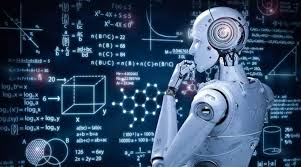
Robotics and Automation
By HNK Globals Institute
Robotics and automation have revolutionized industries by enhancing productivity, precision, and efficiency. From manufacturing to healthcare, agriculture, and beyond, these technologies are transforming the way tasks are performed, reducing human effort, and paving the way for innovative solutions to complex problems.
Key Features:
- Precision and Accuracy: Robots execute tasks with minimal errors, ensuring high-quality outputs.
- Automation Systems: Integrate software and hardware to streamline repetitive tasks without human intervention.
- AI Integration: Leverages artificial intelligence for smart decision-making and adaptability.
- Customizable Designs: Robots are designed for specific applications, from industrial arms to medical assistants.
- Real-Time Monitoring: Advanced sensors provide real-time data for operational adjustments.
- Human-Robot Collaboration (Cobots): Designed to work alongside humans safely and efficiently.
- Scalability: Robotics and automation systems can scale operations as demands grow.
- Energy Efficiency: Advanced systems are optimized to use minimal energy while delivering maximum output.
- Remote Operation: Robots can be controlled remotely, enabling operations in hazardous environments.
- Predictive Maintenance: Automated systems anticipate maintenance needs to avoid downtime.
Advantages:
- Enhanced Productivity: Automates routine tasks, allowing workers to focus on strategic activities.
- Cost Efficiency: Reduces labor costs and improves operational efficiency.
- Increased Safety: Robots perform dangerous tasks, minimizing risks to human workers.
- 24/7 Operations: Robots and automated systems can work continuously without fatigue.
- Improved Quality: Consistency in task execution leads to fewer defects.
- Rapid Innovation: Encourages the development of new technologies and solutions.
- Resource Optimization: Maximizes use of raw materials through precision and reduced waste.
- Adaptability: Robots can be reprogrammed for different tasks, making them versatile.
- Data Utilization: Automation systems collect and analyze data to improve decision-making.
- Global Competitiveness: Businesses adopting automation gain a competitive edge in global markets.
Applications of Robotics and Automation:
- Manufacturing: Assembly lines, quality control, and inventory management.
- Healthcare: Surgical robots, diagnostic machines, and patient monitoring.
- Agriculture: Automated harvesting, pest control, and precision farming.
- Logistics: Warehouse automation, drone delivery, and supply chain management.
- Defense: Unmanned vehicles, surveillance drones, and bomb disposal robots.
- Construction: Robotic arms for building and 3D printing of structures.
- Retail: Self-checkout systems, inventory robots, and customer service bots.
- Education: Interactive robots for teaching and research in STEM fields.
Challenges in Robotics and Automation:
- High Initial Costs: Developing and deploying robots require significant investments.
- Job Displacement: Automation can reduce demand for manual labor in certain sectors.
- Technical Expertise: Skilled personnel are needed to design, program, and maintain systems.
- Ethical Concerns: Raises questions about privacy, data security, and human replacement.
- Integration Issues: Compatibility with existing systems can be challenging.
Future Prospects:
- Advanced AI Integration: Smarter robots capable of learning and adapting in real-time.
- Collaborative Robots: Increased use of cobots in workplaces.
- Autonomous Systems: Self-driving vehicles and independent machines for complex tasks.
- Green Automation: Energy-efficient systems to support sustainability goals.
- Global Accessibility: Wider adoption of robotics in developing nations for economic growth.
Robotics and automation continue to be at the forefront of technological innovation, driving efficiency, safety, and productivity across various sectors. With ongoing advancements, they promise to redefine the limits of human potential and industrial capability.








